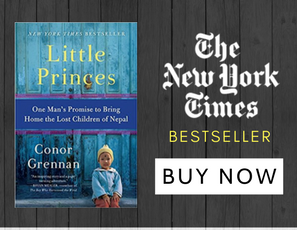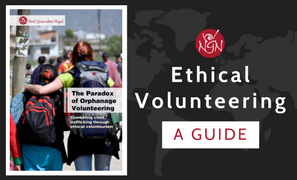February 20, 2012: Imagine a complete stranger telling you that your adopted daughter, who you always believed was an orphan, was actually not. “Surreal and heart wrenching” is how Ana would describe it.
Names have been changed in the story to protect the privacy of those involved.
In early 2004, a Spanish woman named Ana wanted to adopt a Nepalese child. Nepal was still in an armed conflict and she was told that many children were losing their parents. She arranged a meeting with a representative at the Consulate of Nepal in Spain to find out more information. Ana was given the contact information for an orphanage in Nepal and started the complex process necessary to adopt a child.
After about one year, the adoption became official and Ana, overcome with joy, traveled to the orphanage in Kathmandu to meet her new daughter and bring her home to Spain. The orphanage had arranged for Ana to adopt Sunitha, a six-year-old girl with a personality that enchanted Ana from the beginning. As months passed, Sunitha quickly learned Spanish and slowly began assimilating to Spanish culture. “Sunitha was becoming a Spaniard, but I also wanted her to be aware of her Nepalese heritage. I did not want Sunitha to forget her origins,” said Ana.
In February 2011, Next Generation Nepal’s (NGN) Country Director, Julien Lovera received a tip that there was an orphanage operating in Kathmandu involved in illegal adoptions and abuse. NGN supported Government of Nepal authorities as they closed down the home and rescued the 20 children found there, children who had recently watched two of their peers die from beatings, starvation, and neglect. The “orphanage” was actually part of a child trafficking racket that forged documents declaring children were orphans; and illegally adopted some of them away.
NGN took the children into their transitional home and 14 have since been reunited with their families. During initial conversations with the children, one of the girls, Bindu, told a devastating story to NGN’s reintegration managers. In a frightened tone, Bindu expressed that her sister, Sunitha, had been given to a Spanish woman in 2005.
After hearing this alarming news, Lovera and NGN’s reintegration team obtained Ana’s information and contacted her to deliver the shocking news: Her adopted daughter was not an orphan. In fact, Sunitha had a living biological mother, sister, and brother. Ana was understandably shaken and very confused about this news. She explained the news she had received to Sunitha, and after a period of processing, they decided that they would like to reconnect with the biological family.
“This is a very difficult story to describe,” stated Ana. “Caring for Sunitha as she continues to develop despite so much emotional trauma has been very inspirational and difficult for me. She has demonstrated so much strength to be willing to reconnect with her biological family. I think that reconnecting will be a very positive step for us. It is impossible to say that with certainty, but I believe that reconnection is healthy and important.”
Sunitha’s biological mother, Kanchan, has expressed that she wants to remain connected to both Ana and Sunitha through letters and phone calls. Kanchan is happy that Sunitha is in a home full of love and she does not harbor any ill will towards Ana, nor does she want Sunitha to experience further emotional distress. She does, however, feel betrayed by the director of the orphanage. “I brought my daughter to what I thought was a children’s home so that she could be temporarily provided for while I worked to improve my financial situation,” stated Kanchan. “I was deceived by the children’s home, Ana was deceived, and of course Sunitha was deceived. After all that has happened, I just want to maintain a connection with Sunitha and her new family. I do not want Sunitha to suffer any more.”
Editor’s Note
Many of the children in Nepal’s “orphanages” are there because traffickers (who are sometimes relatives) deceive parents in remote villages into allowing them to take their kids to “elite educational facilities” that are actually centers for child exploitation. In fewer instances, impoverished Nepalese parents make desperate decisions to take their children themselves to children’s homes under the assumption that they will at least have a chance at an education and a successful life. However, these parents do not think the homes’ managers would ever send their children overseas through adoption. They assume that children’s homes will care for their kids until they enter college and can work on their own.
According to The U.S. State Department website, the United States “continues to strongly recommend that prospective adoptive parents refrain from adopting children from Nepal due to grave concerns about the reliability of Nepal’s adoption system and credible reports that children have been stolen from birth parents, who did not intend to irrevocably relinquish parental rights as required by INA 101(b)(1)(F). We also strongly urge adoption service providers not to accept new applications for adoption from Nepal.”






